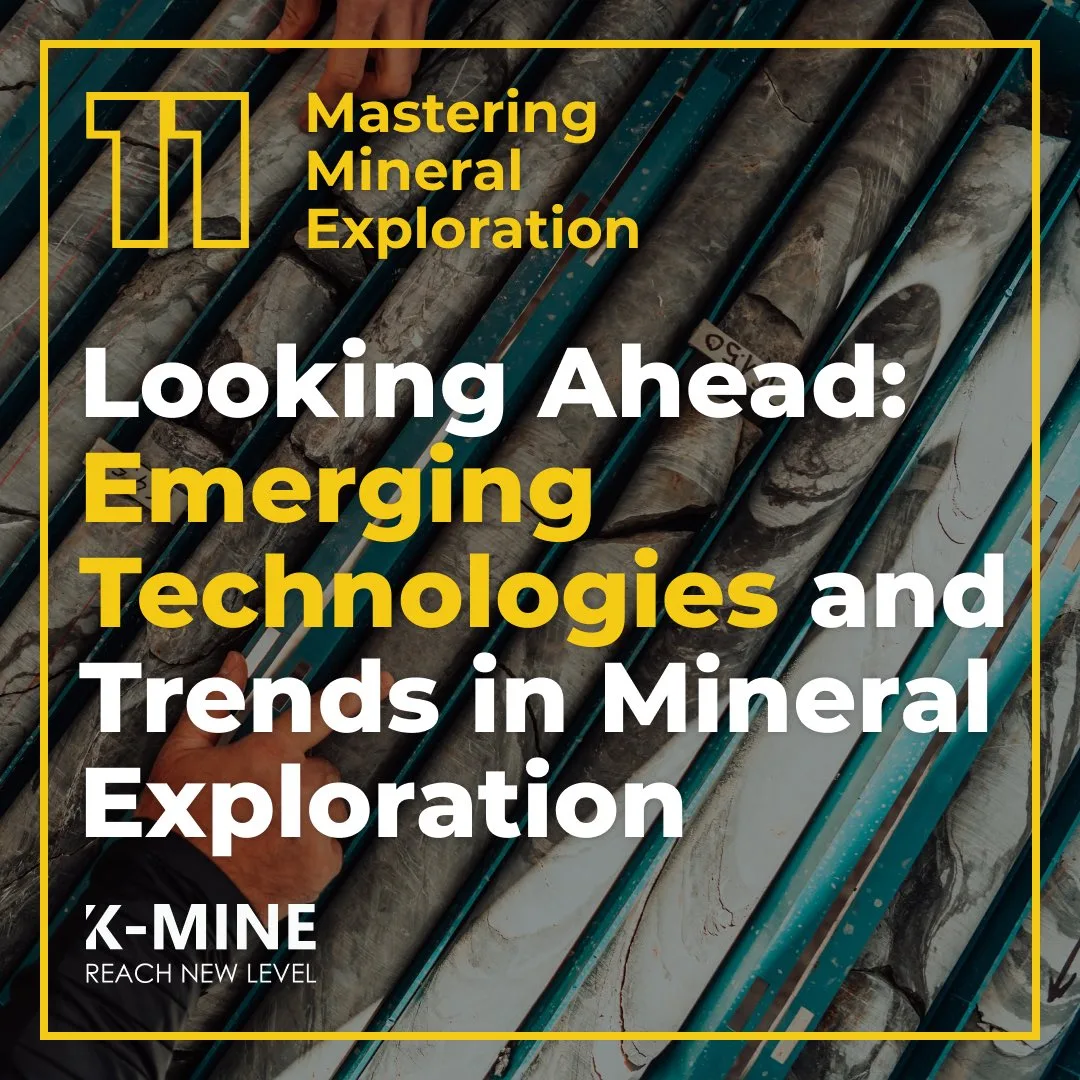
Content
- The Current Landscape of Mineral Exploration
- Emerging Technologies in Mineral Exploration
- Advanced Data Analysis and Machine Learning
- Remote Sensing and Satellite Technologies
- Advanced Drilling Techniques
- The Role of Software in Facilitating Technological Advancements
- Future Trends in Mineral Exploration
- Conclusion
In the dynamic world of mineral exploration, staying ahead of the curve is of paramount importance. With evolving challenges, increased competition, and ever-growing demand for resources, the industry is perpetually on the lookout for methods to optimize the exploration process. This is where emerging technologies and future trends come into play, marking the dawn of a new era in mineral exploration.
Advancements in technology have the potential to revolutionize the way we explore for minerals, making the process more efficient, accurate, and environmentally friendly. From cutting-edge data analysis techniques to advanced remote sensing capabilities, these developments are transforming every facet of mineral exploration.
This article dives into the crux of these emerging technologies and trends, providing an insightful view of the future of mineral exploration. As we delve into this exciting journey, we will uncover how these advancements are poised to redefine the industry, pushing the boundaries of our capabilities and fostering the growth of the mineral exploration sector.
The Current Landscape of Mineral Exploration
Mineral exploration today is a complex and highly advanced field that integrates multiple disciplines, from geology and geophysics to geochemistry and data analysis. Contemporary exploration activities employ a suite of established and reliable techniques to identify prospective regions, extract samples, and analyze data to assess the viability of potential deposits.
The first step typically involves regional-scale geologic mapping and remote sensing, followed by geochemical sampling and geophysical surveys to zero in on potential targets. Detailed geologic mapping, drilling, and analysis of drill samples then provide a more accurate understanding of the mineral potential of a specific location. This data feeds into complex mathematical models to estimate the volume and grade of mineral resources, ultimately guiding investment decisions.
However, the process is not without its challenges. Traditional mineral exploration techniques can be time-consuming, labor-intensive, and expensive. They can also have significant environmental impacts. Spatial variability, complex geological structures, and depth of deposits pose additional challenges in accurately estimating resource potential. The high risk and uncertainty associated with mineral exploration often make it a high-stakes endeavor.
In this context, the role of emerging technologies and trends is rapidly becoming a game-changer. By addressing these challenges and streamlining the exploration process, they promise a more efficient, precise, and sustainable future for mineral exploration.
Emerging Technologies in Mineral Exploration
Emerging technologies are rapidly reshaping the mineral exploration landscape, enhancing the precision and efficiency of exploration activities while minimizing their environmental footprint. Let’s take a closer look at some of these game-changing technologies:
- Advanced Remote Sensing Technologies: Remote sensing technologies have always been a cornerstone of mineral exploration. However, the latest advances are enhancing their potential to an unprecedented degree. High-resolution satellite imagery, hyperspectral imaging, and LiDAR (Light Detection and Ranging) can provide more detailed and accurate data about the earth’s surface. These technologies can identify geological structures and anomalies that may indicate mineral deposits with greater precision and at a lower cost than traditional methods.
- Artificial Intelligence (AI) and Machine Learning (ML): AI and ML are becoming increasingly pivotal in mineral exploration. They can analyze vast amounts of geospatial, geochemical, and geophysical data far more quickly and accurately than human analysts. Machine learning algorithms can identify patterns and anomalies that might indicate the presence of mineral deposits, significantly enhancing the efficiency and success rate of exploration activities.
- Advanced Drilling Techniques: New drilling technologies are making it possible to reach greater depths more quickly and with less environmental impact. Techniques such as coiled tubing drilling and sonic drilling offer faster, cheaper, and more accurate sample collection. They also reduce the amount of waste produced, making exploration activities more sustainable.
- Real-time Data Analysis: Advances in communication technologies are enabling the real-time transmission and analysis of data from remote exploration sites. This allows for quicker decision-making and enhances the ability to adapt exploration strategies based on immediate feedback from the field.
These technologies, among others, are already making their mark on the industry, but their full potential is only just beginning to be realized. As they continue to evolve and mature, they promise to revolutionize mineral exploration even further.
Advanced Data Analysis and Machine Learning
The advent of advanced data analysis and machine learning has unlocked unprecedented opportunities in mineral exploration, proving instrumental in refining processes, optimizing operations, and mitigating risks. Let’s break down their pivotal role in the field:
- Improving Predictive Capabilities: Machine learning algorithms can be trained on vast volumes of historical and geological data to predict the most promising areas for mineral deposits. They can identify complex patterns and relationships that would be almost impossible for humans to detect, enhancing the accuracy and efficiency of exploration.
- Reducing Risk: Mineral exploration is inherently fraught with uncertainties. However, advanced data analysis and machine learning can help mitigate these risks. By providing more accurate predictions and enabling real-time monitoring and adaptive decision-making, these technologies can significantly reduce the likelihood of costly errors and oversights.
- Optimizing Exploration: Machine learning can also optimize exploration strategies by analyzing past successes and failures. It can suggest the most effective techniques and approaches for different scenarios, enhancing the efficiency and success rate of exploration efforts.
- Innovative Applications: The applications of machine learning and advanced data analysis in mineral exploration are continuously expanding. From predictive maintenance of exploration equipment to automated mineralogy and real-time decision making, these technologies are reshaping every facet of the exploration process.
By leveraging these sophisticated tools, mining companies can extract maximum value from their data, unlocking insights that drive better decision-making, greater operational efficiency, and more successful exploration outcomes. The potential of these technologies is vast, and their impact on mineral exploration is only set to increase in the coming years.
Remote Sensing and Satellite Technologies
The digital revolution is expanding into the skies and beyond, with remote sensing and satellite technologies emerging as game-changers in mineral exploration. Let’s delve into how they are transforming the landscape of data collection and interpretation:
- Improved Data Collection: The beauty of remote sensing lies in its ability to collect comprehensive data from inaccessible regions and vast terrains quickly and efficiently. It enables mineral exploration teams to assess large areas for potential mineral deposits without the need for time-consuming and expensive ground-based surveys.
- Detailed Imaging: Satellite technologies, including hyperspectral and multispectral imaging, can detect specific mineral signatures by analyzing the reflection of sunlight from the earth’s surface. By doing so, they provide detailed information about the type and distribution of minerals in a given area, assisting in the preliminary assessment of mineral potential.
- Real-time Monitoring: With the advent of advanced satellites and aerial drones, real-time monitoring of exploration sites has become a reality. This capability is invaluable in assessing changes over time and responding promptly to any developments.
- 3D Terrain Modelling: Remote sensing and satellite data can be used to generate 3D terrain models, providing valuable insights into the surface characteristics and geological features of exploration sites. This detailed topographic information can be invaluable in planning exploration strategies and logistics.
- Environmentally Friendly: By minimizing the need for intrusive ground-based surveys, remote sensing and satellite technologies reduce the environmental footprint of mineral exploration activities.
Remote sensing and satellite technologies have already proven their value in mineral exploration, but they’re just getting started. As these technologies continue to evolve and improve, they will play an increasingly critical role in unlocking the earth’s mineral potential.
Advanced Drilling Techniques
Drilling is a crucial step in mineral exploration, providing the most direct measurement of the subsurface geology. As technology advances, new drilling techniques are being developed that could dramatically enhance efficiency and minimize environmental impact. Let’s explore some of these techniques:
- Automated Drilling: Automated drilling systems use robotic technology to perform drilling operations, increasing safety by removing personnel from potentially hazardous environments. These systems can also enhance productivity by operating continuously, reducing the downtime associated with shift changes.
- Directional Drilling: Traditional drilling methods typically involve drilling a vertical well. However, directional drilling allows wells to be drilled at angles, or even horizontally, providing greater access to mineral deposits and reducing the surface footprint of drilling operations.
- Coiled Tubing Drilling: Coiled tubing drilling uses a continuous, flexible drill pipe wound on a large reel. This method allows for faster, cheaper drilling and reduces the environmental impact by minimizing waste and cutting down on the number of trips in and out of the hole.
- Environmentally Friendly Drilling Techniques: There is growing interest in developing drilling techniques that minimize environmental impact. This includes methods to reduce water usage, decrease noise pollution, and limit the release of drilling fluids and cuttings into the environment.
The ongoing development of advanced drilling techniques is a testament to the mining industry’s commitment to innovation, efficiency, and environmental stewardship. These technologies are set to play a vital role in shaping the future of mineral exploration, enabling us to tap into mineral resources more effectively and sustainably.
The Role of Software in Facilitating Technological Advancements
As the mineral exploration industry evolves, so too does the role of software in facilitating these technological advancements. Sophisticated software solutions like K-MINE can provide a platform that integrates these emerging technologies to streamline the mineral exploration process.
- Integration of Advanced Data Analysis and Machine Learning: K-MINE can utilize machine learning algorithms and advanced data analysis techniques to process and interpret large volumes of geospatial data. This allows for the prediction of mineral deposit locations with increased accuracy, optimizing exploration efforts.
- Compatibility with Remote Sensing and Satellite Technologies: K-MINE can integrate data collected from remote sensing and satellite technologies, providing an enriched data source for exploration decision-making. This compatibility allows for the creation of detailed and accurate geological models.
- Automated Drilling Data Management: With advancements in automated drilling technologies, software plays a vital role in managing the data generated. K-MINE can seamlessly capture and manage drilling data, facilitating real-time analysis and interpretation.
- isualization and Simulation: K-MINE can leverage the power of 3D visualization and simulation technologies. These capabilities allow for more accurate and realistic modelling of mineral resources, aiding in the decision-making process.
Software solutions like K-MINE play a pivotal role in bridging the gap between emerging technologies and practical applications in mineral exploration. By integrating these advancements into a unified platform, they help streamline the exploration process, reduce costs, and enhance decision-making.
Future Trends in Mineral Exploration
As we look ahead, there are several future trends that are expected to shape the landscape of mineral exploration. These include increased sustainability practices, further integration of technology, and shifting market demands.
- Increased Sustainability Practices: As the global community continues to prioritize sustainable practices, the mining industry is expected to follow suit. Exploration methods that minimize environmental impact and promote sustainable resource use will be highly sought after. This includes practices such as precision mining, minimizing waste, and conducting thorough environmental impact assessments prior to exploration.
- Further Integration of Technology: Technological advancements will continue to revolutionize mineral exploration. The integration of AI and machine learning, remote sensing technologies, and advanced drilling techniques will become more sophisticated and widespread. Additionally, the use of virtual reality for 3D geological modelling and exploration planning is an emerging trend.
- Shifting Market Demands: The demand for certain minerals could change significantly due to evolving market trends. For instance, the shift towards green energy could increase the demand for minerals used in renewable energy technologies, such as lithium, cobalt, and rare earth elements. Exploration efforts may thus be redirected towards these resources.
- Big Data and Cloud Computing: The trend towards Big Data and cloud computing is set to continue. These technologies enable the handling of massive datasets and provide powerful computational capabilities for data analysis, improving the efficiency and accuracy of exploration.
- Decentralization and Digitization: The future of mineral exploration will likely see more decentralization and digitization. Blockchain technology could be used to improve transparency in the mineral supply chain, and digital platforms will increasingly be used for collaboration and data sharing.
These trends point towards a future in which mineral exploration is more efficient, sustainable, and responsive to changing market demands.
Conclusion
Throughout this article, we’ve taken an exciting journey into the future of mineral exploration. We’ve examined the current state of the field and delved into the emerging technologies that are set to revolutionize the exploration process, such as advanced data analysis and machine learning, remote sensing, and new drilling techniques. We also looked at how innovative software like K-MINE can facilitate the integration of these advancements to streamline and optimize mineral exploration.
We also projected into the future, considering trends like increased sustainability practices, the further integration of technology, and shifting market demands. We anticipate that these changes will make mineral exploration more efficient, sustainable, and responsive to the needs of our changing world.
Staying abreast of these technologies and trends is essential for any stakeholder in the mineral exploration industry. By doing so, they can leverage these advancements to their advantage and continue to make significant strides in the field.
Thank you for joining us on this journey.



 Back
Back